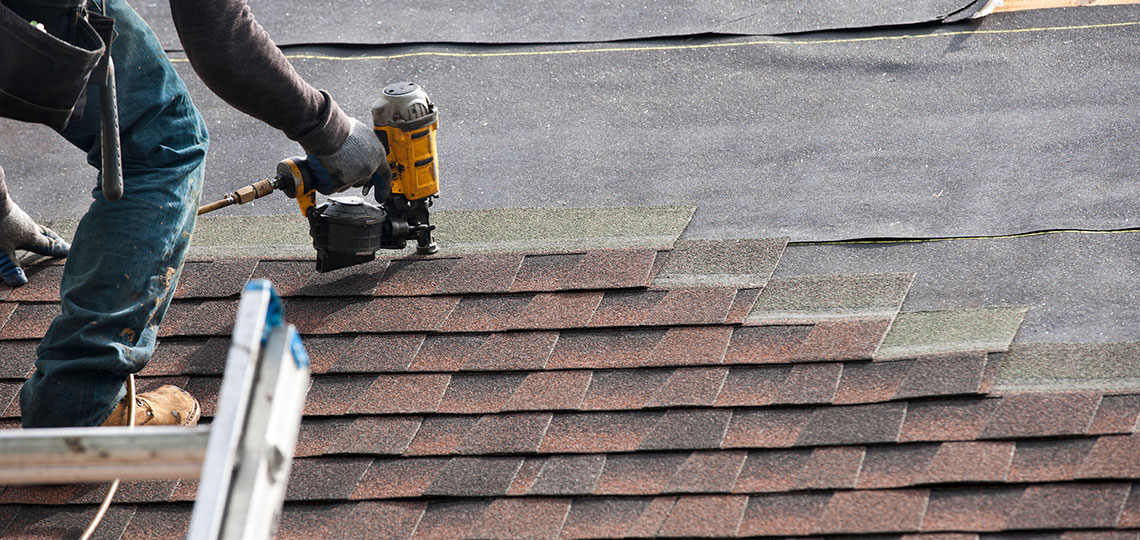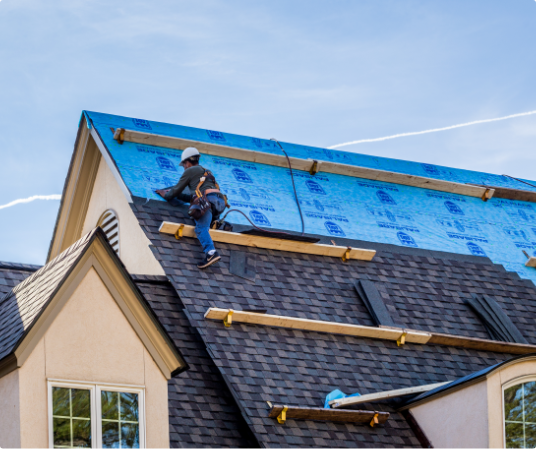Best Practices for Ensuring Proper Roof Covering Ventilation
A balanced consumption and exhaust vent ratio, typically 1:300, plays a crucial role, with intake vents ideally put at the reduced side of the roof covering for amazing air access and exhaust vents at the peak for warm air exit. Keeping insulation away from vents is critical to stop airflow restriction.
Understand Air Flow Essentials
Properly understanding air flow fundamentals is necessary for ensuring the durability and efficiency of roofing systems. Efficient ventilation reduces wetness buildup and temperature level extremes in the attic room, both of which can bring about substantial architectural damages gradually. A well-ventilated roof covering assists in stopping usual concerns such as mold growth, wood rot, and ice dams, which can jeopardize the honesty of the roof covering products and the underlying frameworks.
The primary goal of ventilation is to help with the activity of air, permitting a regular exchange in between the indoor and outside environments. This equilibrium is attained through a mix of intake and exhaust vents that collaborate to preserve ideal air flow. Consumption vents, commonly situated along the soffits or eaves, allow fresh air to get in the attic room room, while exhaust vents, frequently situated at or near the roof covering ridge, make it possible for hot, humid air to run away.
Secret variables affecting the efficiency of roofing air flow consist of appropriate positioning, ample sizing, and ensuring that both consumption and exhaust vents are unobstructed. Normal examination and maintenance are critical to determine potential clogs, damage, or inadequacies in the ventilation system, thereby protecting the roof's efficiency and sturdiness.
Sorts Of Roofing System Vents
Roof covering vents play a critical role in keeping effective attic air flow and, by expansion, the overall health and wellness of the roofing system. Numerous kinds of roofing vents are available, each with special advantages tailored to particular roofing needs. Ridge vents, for instance, are mounted along the roofing's height, allowing warm, damp air to run away from the attic. They use continuous ventilation and mix seamlessly with the roofline, making them both reliable and cosmetically pleasing.

Soffit vents are set up under the eaves and job in tandem with roof vents to make sure a balanced intake and exhaust system. By permitting cooler air to enter from below, soffit vents assist in the expulsion of hot air through upper vents. Gable vents, situated on the exterior walls of the attic, deal another reliable service, specifically in homes with saddleback roofs.
Assess Your Present Air Flow

Following, think about the age and problem of your roof products and ventilation parts. Older systems may not conform with current building ordinance or may have weakened gradually, decreasing their efficiency. Conduct a comprehensive evaluation to recognize any type of signs of deterioration, such as corrosion, damage, or voids that might jeopardize the system's efficiency.
Furthermore, gauge the attic room temperature and moisture levels. High temperature levels and moisture can show insufficient air flow - roofing companies in gainesville florida. Use a hygrometer and thermometer to get precise analyses, comparing them with outside conditions. Persistent inconsistencies recommend potential concerns that need attending to.
Installment Best Practices
Effective setup of roof ventilation systems is extremely important for ensuring ideal efficiency and durability. Correct installment begins with recognizing the specific ventilation requirements of the roof covering and the building it covers. This involves computing the proper proportion of consumption to exhaust vents, commonly adhering to the 1:300 rule, which states one square foot of ventilation for every 300 square feet of attic flooring space.

Consumption vents ought to be set up at the roof's reduced side, frequently in the soffits, to permit trendy air to get in. Exhaust vents, on the various other hand, ought to be set up near or at the roofing's height to promote the exit of warm, moist air.
Seal all air vent connections carefully to avoid air leakages and potential water infiltration. Use top quality products and follow producer standards to guarantee resilience and efficiency. Furthermore, incorporating ridge vents with baffles can substantially enhance air flow effectiveness by stopping wind-driven rain and snow from going into the attic.
Eventually, accurate installment of roof covering air flow systems minimizes possible problems such as mold growth, this website ice dams, and structural damage, ensuring the roof's integrity and the structure's overall health.
Regular Maintenance Tips
Consistency in upkeep methods is basic to making sure the long-lasting efficiency of roof covering ventilation systems. Throughout these inspections, ensure that vents are complimentary of debris, nests, and other blockages that could restrain air movement.
Cleaning the vents is one more important job. Make use of a soft brush or a vacuum cleaner to eliminate dirt and debris from intake and exhaust vents. Beware not to harm the vent screens or louvers throughout the process. In addition, inspect the attic space for any type of indicators of water damage, which could compromise the stability of the roof covering system.
Proper insulation is similarly vital. Ensure that attic insulation does not obstruct the vents, as this can seriously limit airflow. Rearrange or change it to keep an effective barrier. if any insulation has actually changed or settled.
Finally, change any type of harmed or missing out on parts immediately. Broken vents, broken roof shingles, or worn-out flashing can all add to poor air flow and needs to be addressed right away. Normal upkeep makes certain that the roofing air flow system operates ideally, therefore pop over to this web-site extending the life expectancy of the roofing itself.
Final Thought
Making sure appropriate roofing ventilation is vital for preserving the efficiency and durability of a roof. Adherence to the 1:300 intake and exhaust air vent proportion, coupled with the critical placement of vents, is crucial. Routine biannual inspections, debris cleansing, and making sure insulation does not obstruct airflow are vital practices. Applying these finest methods will foster a well-ventilated roof system, thus reducing prospective concerns associated to moisture build-up and too much warmth, eventually lengthening the roofing's lifespan.
A balanced intake and exhaust air vent proportion, frequently 1:300, plays a crucial function, with consumption vents preferably put at the reduced side of the roofing system for trendy air entrance and exhaust vents at the peak for warm air departure. Intake vents, generally situated along the soffits or eaves, allow fresh air to enter the attic space, while exhaust vents, typically positioned at or near the roof ridge, allow hot, humid air to leave.
Soffit vents are set up under the eaves and work in tandem with roof vents to guarantee a balanced consumption and exhaust system. By permitting cooler air to enter from below, soffit vents promote the expulsion of warm air through upper vents. Adherence to the 1:300 intake and exhaust air vent proportion, paired with the strategic placement of vents, is crucial.
Comments on “Step-by-Step Guide to Locating the Right Roofing Companies in Gainesville”